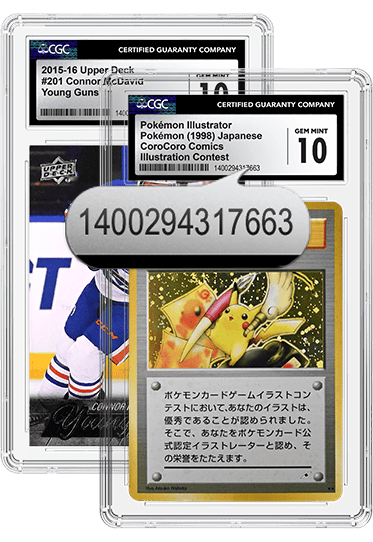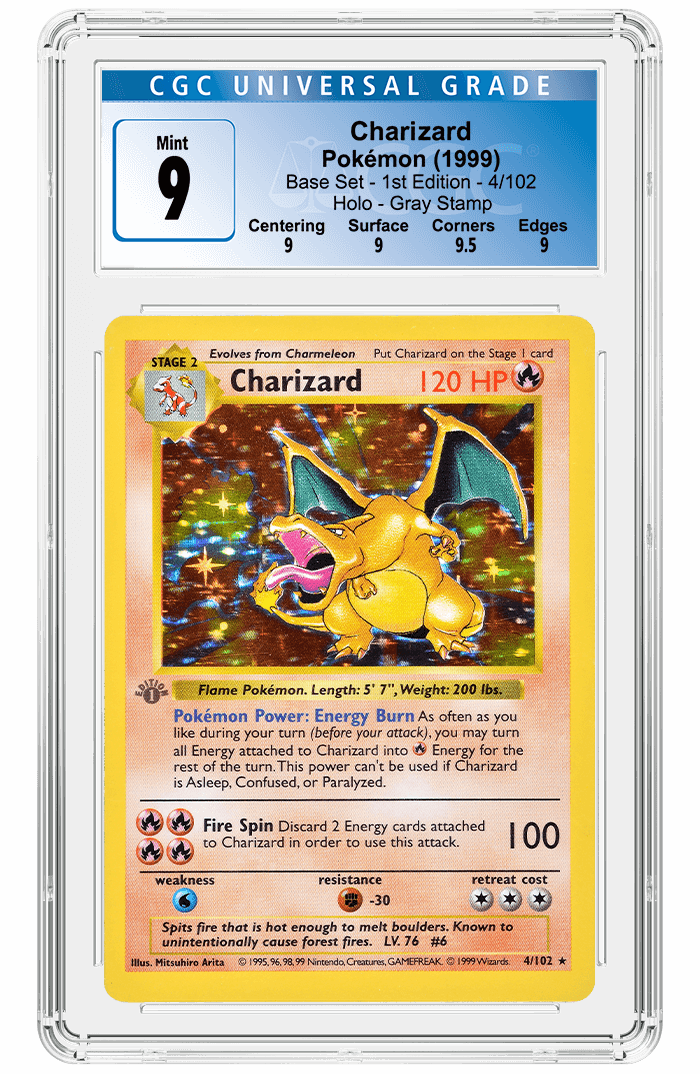The History of Yu-Gi-Oh!
Posted on 5/26/2022
In the late 1990s and early 2000s, the increasing popularity of three cartoons in the west gave rise to three TCG powerhouses, and CGC Trading Cards is now grading all three franchises: Pokémon, Digimon and Yu-Gi-Oh!
The Pokémon TCG debuted in late 1998 to promote the release of the video game. Pokémon Red and Blue came out in 1999, with the release of the trading cards at the beginning of the year. In 1999, Digimon cards were introduced to promote Tomodachi-like games and were hugely successfully in Japan and Europe.
But where did Yu-Gi-Oh! come from?
Originally released in 1996 in Weekly Shonen Jump, a famous Japanese magazine known for publishing Dragon Ball, One Piece and Naruto, Yu-Gi-Oh! was a horror manga — Japanese comic — using the concept of games. In Japanese, Yu-Gi-Oh! (遊☆戯☆王) means “King of Games” but the stories did not exclusively involve card games.
In the first chapter, the main character plays a game with another character. The players take turns placing money on their hands, and then stabbing the money with a knife. If the player successfully stabs the money, they get to keep it. The game ends once a player stabs his hand.
When released, the manga was not very popular. The first weeks saw some interest in the concept, but then the new chapters began repeating the same formula even though it was with a different game. The audience lost interest.
How did a relatively unknown horror manga become a children’s card game and huge franchise?
Each week featured a different game, from Russian roulette to craps, until one week, the manga featured a card game named “Magic & Wizards,” renamed “Duel Monsters” in English. Meant as the first two-chapter game, fan reaction was overwhelming. Kazuki Takahashi, the manga’s creator, tried to make the concept work with other games like chess, but it was the card game that became very popular in Japan.
After hearing the news, Konami, a major manufacturer of arcade games, decided to buy the rights from Weekly Shonen Jump to produce a card game based on the manga. However, the manga’s dark tones limited its audience, especially in the US, and Konami needed a franchise that could compete with Poké-mania, which was taking the world by storm. So, they chose to make Yu-Gi-Oh! more child friendly. The new cartoon would air in 2000 in Japan, with a focus on the card game, to promote the OCG (Original Card Game) released the year prior and would see a localization by 4Kids and Kids WB in 2001.
After huge success in Japan and with the release of the TV show worldwide, Konami sold localization rights to Upper Deck Entertainment to translate the cards into English in 2002. The decision to wait a bit for the cartoon to get traction, in correlation with Poké-mania still existing but starting to decline, gave Konami a huge leg up over the competition as children were looking for something new. In late 2001, Konami was sending VHS and DVD guides, and the first promo card was revealed in December 2001: the “Summoned Skull” sample.
“Legends of the Blue Eyes,” released in March 2002, was the first set outside of Japan. It featured the now iconic “Blue-Eyes White Dragon” card used mainly by Seto Kaiba, fan-favorite rival in the cartoon; “Dark magician”, the main character’s primary card; and finally “Exodia, the Forbidden One”, a legendary card that lets you win if you get all five parts in your hand, as shown during the first duel between Kaiba and Yugi in the anime.
Due to the cartoon promoting and showing how the game is played, children were interested in the cards much more than with other franchises. Pokémon cartoons worked to promote the video games, but viewers never see any card games.
What is Yu-Gi-Oh!'s legacy?
Yu-Gi-Oh! sold over $17 million worth of cards in the first months of their release in the US, and Konami’s share gained over 30% in a year.
By the end of 2002, four sets were released: Legends of the Blue Eyes, Metal Rider, Magic Ruler (renamed to Spell Ruler) and Pharaoh’s Servant. Through the years, Toys “R” Us and other outlets regularly promoted tournaments to increase player’s interest in the franchise. Yu-Gi-Oh! was the first to pair up with McDonald’s and other companies to produce promo cards — something Pokémon would copy a couple of years later.
Yu-Gi-Oh! sold over 35 billion cards in the next 20 years, even surpassing Pokémon’s 34 billion as of 2021, and became Jump’s most profitable series. With their second magazine, called V-Jump, they showcased other card games or mangas that were featured in the Weekly Shonen Jump (such as Dragon Ball Super, Dragon Ball Heroes and Yu-Gi-Oh! information and promos, and now their mobile games: Dokkan, Dragon Ball Legends, One Piece Treasure Cruise, etc.).
As one of the three big shows that popularized Japanese animation on TV in the US, Yu-Gi-Oh! deserves its spot when discussing the most important media franchises of the early 2000s. CGC Trading Cards is thrilled to now be grading the TCG.
Stay Informed
Want news like this delivered to your inbox once a month? Subscribe to the free CGC eNewsletter today!







